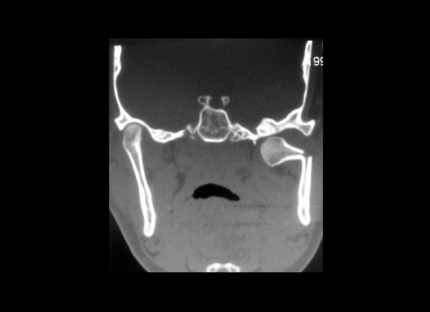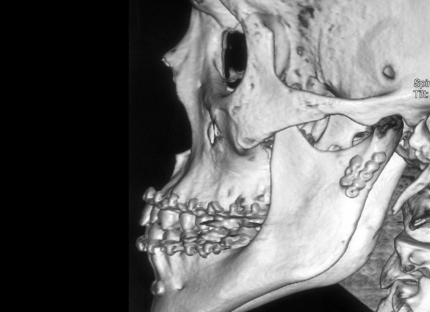- Trauma
- A prominent place in diseases of the maxillofacial area is taken by facial trauma
The skull and face are in fact the regions of the body that are most exposed to traumatic events and, in particular, the most exposed bones of the face are: the nose, zygomatic bones and mandible.


Paramedian mandibular fracture
Fractures of these bones can be single or associated, depending on the extent of the traumatic event.
In extreme very complex cases, important fractures of all the bones of the face (panfacial fractures) and which may become real emergency sitiuations.
The Maxillofacial Surgeon plays an important role in the emergency treatment (control of bleeding and of the upper airways via tracheostomy) and in the definitive treatment of these fractures.
The existing road rules and laws (seat belts, helmets, etc.) has made it possible to substantially reduce the frequency, the number and extent of the facial fractures and injuries.
The treatment of facial fractures has a dual purpose: return the patient the physiognomy lost with fractures and restore the functions (chewing, breathing, vision).
The surgery for a facial fractures is typically performed under general anesthesia and consists in the reduction of the fracture. That is, the restoration of the correct spatial reposition of the fractured skeleton and stabilization to allow healing in the correct position.
The stabilization of the fractures is carried out using titanium and screws plates that allow a stable and rigid fixation of the facial skeleton.

left condylar fracture
# 1




